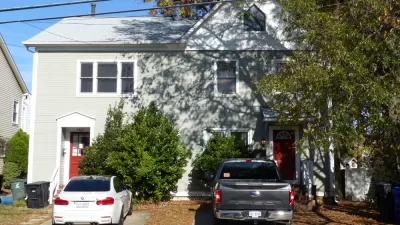Zoning and land use changes proposed in the Home in Tacoma plan, an element of the One Tacoma Comprehensive Plan, was approved this month by the Tacoma Planning Commission.

The Tacoma Planning Commission voted, 6-3, to advance the Home in Tacoma equitable affordable housing strategy as an element of the One Tacoma Comprehensive Plan, reports Stephen Fesler.
Central to Home in Tacoma is a "deep" revision of the city's future land use map in all areas zoned single-family and multifamily in Tacoma, according to Fesler.
If adopted, this would essentially end the concept of single-family zones in the city in both name and regulation. Single-family areas would be redesignated and rezoned to Low-Scale Residential or Mid-Scale Residential zoning types, which would permit a mix of housing types like duplexes, rowhouses, and apartments. Low-Density Multifamily areas would also get a boost to Mid-Scale Residential, a more intensive land use designation than the current one.
The article includes more details about the proposed zoning and land use changes, and the process by which the approved Home in Tacoma plan evolved into its final form. Among those detail is a phased approach for adoption. "Under the phased approach, comprehensive plan changes and some near-term land use code and programmatic changes would be adopted in the first phase. Deeper land use code policies and zoning changes would follow in the second phase," explains Fesler.
Planetizen previewed the potential of the Home in Tacoma plan to eliminate single-family zoning in favor of Missing Middle Housing typologies in January and March this year.
FULL STORY: ‘Home In Tacoma’ Advances with Recommendation to Eliminate Single-Family Zoning

Study: Maui’s Plan to Convert Vacation Rentals to Long-Term Housing Could Cause Nearly $1 Billion Economic Loss
The plan would reduce visitor accommodation by 25,% resulting in 1,900 jobs lost.

North Texas Transit Leaders Tout Benefits of TOD for Growing Region
At a summit focused on transit-oriented development, policymakers discussed how North Texas’ expanded light rail system can serve as a tool for economic growth.

Using Old Oil and Gas Wells for Green Energy Storage
Penn State researchers have found that repurposing abandoned oil and gas wells for geothermal-assisted compressed-air energy storage can boost efficiency, reduce environmental risks, and support clean energy and job transitions.

Santa Barbara Could Build Housing on County Land
County supervisors moved forward a proposal to build workforce housing on two county-owned parcels.

San Mateo Formally Opposes Freeway Project
The city council will send a letter to Caltrans urging the agency to reconsider a plan to expand the 101 through the city of San Mateo.

A Bronx Community Fights to Have its Voice Heard
After organizing and giving input for decades, the community around the Kingsbridge Armory might actually see it redeveloped — and they want to continue to have a say in how it goes.
Urban Design for Planners 1: Software Tools
This six-course series explores essential urban design concepts using open source software and equips planners with the tools they need to participate fully in the urban design process.
Planning for Universal Design
Learn the tools for implementing Universal Design in planning regulations.
Ascent Environmental
Borough of Carlisle
Institute for Housing and Urban Development Studies (IHS)
City of Grandview
Harvard GSD Executive Education
Toledo-Lucas County Plan Commissions
Salt Lake City
NYU Wagner Graduate School of Public Service




























